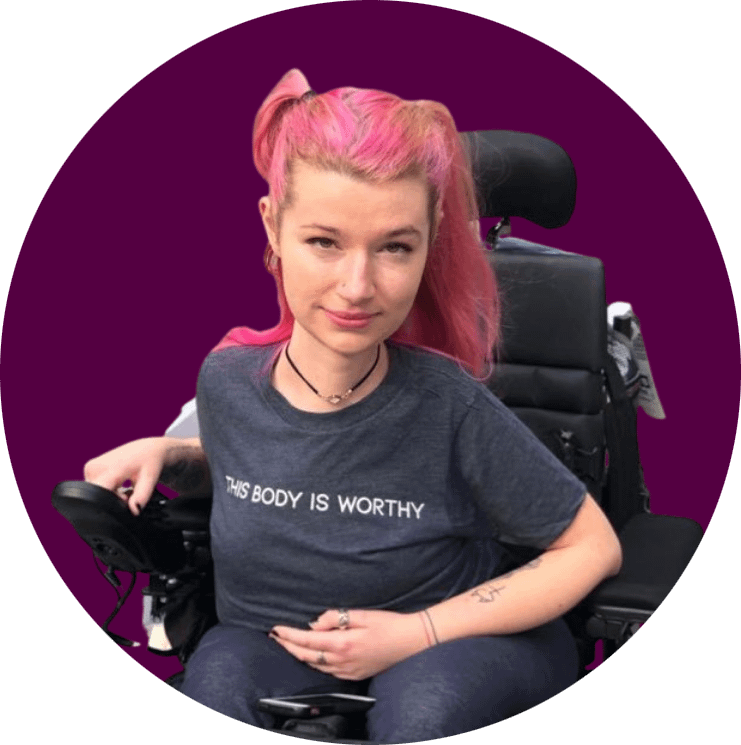by Hannah Soyer
Social media has been a blessing for many, especially those of us with disabilities who often find it difficult to access various physical spaces due to access barriers. But, like most Internet mediums, social media represents a double-edged sword that has the power to ostracize and isolate as much as it can uplift and connect. For instance, Instagram has been especially linked to increased body dysmorphia, depression, and other mental health disorders for users.
Body dysmorphic disorder (also known as body dysmorphia) is a mental illness in which someone fixates on and obsesses over one or more of their perceived physical flaws or defects, according to the Mayo Clinic. These “flaws” are either minor differences that appear much more serious to the person with body dysmorphic disorder or are “flaws” that cannot be perceived by others at all. It is important to note that body dysmorphic disorder cannot simply be combated by other people telling the affected person that they are beautiful or that their perceived flaw is not as serious as they believe it to be. Although there are many assumed causes––including family history or one’s makeup of their brain––societal pressures and expectations of beauty certainly contribute, according to the Mayo Clinic. Now, enter the highly popular photo-based platform: Instagram.
In 2019, a report showed that nearly half of Instagram influencers who were surveyed said their job as an influencer impacted their mental health, and 32% said it negatively impacted body image. Another study from 2017 ranked Instagram as the most dangerous social media platform in regards to young people’s mental health. Why? Instagram (along with other photo and video-based apps like Snapchat and TikTok) offers filters and lenses that dramatically change the way someone looks. Instagram filters coupled with other apps that can easily remove blemishes and change body shape, are causing users to see images flooding their feeds that simply do not match reality. In addition, Instagram is often viewed as a place to share your “highlights” – that is, when you are looking your best and doing fun things. Although there are accounts and trends working to counterbalance this, when viewers take what they see on their screens as the lived reality of the person behind the account, their perception of what life entails––with all its ups and downs and imperfect skin and bodies––can easily become warped.
The negative effects of altered photos don’t just come from others. If you are constantly seeing edited photos of yourself, it can also cause you to think something is wrong with your face and body, as Vicky Spratt describes in her Refinery 29 column. Psychologist Phillippa Diedrichs and the Dove Self-Esteem Project conducted a study that found that 60% of girls are upset that their real appearance doesn’t match how they appear online.
The ease with which people can see slightly “better” versions of themselves––and a culture that places such high value on arbitrary physical characteristics––has real-world consequences: the rise of face filters have led to increases in seeking out cosmetic surgery, with clients asking plastic surgeons to make their face match the filtered image of themselves.
What’s often missing from discussions on body dysmorphia and beauty ideals is awareness of how ableism feeds these ideals and how these ideals feed ableism. If you have a visible disability that makes you appear markedly different from what Westernized culture deems beautiful, the struggle to feel at home in your body may be even more difficult. This also disproportionately impacts people who are multiply-marginalized. Beauty standards often uphold whiteness and features of white people as the ideal, and features of non-white people as undesirable.
For transgender people, the desire to appear more feminine or more masculine and pressures to avoid harassment and violence contribute to rates of eating disorders that are as much as five times higher than of their cisgender peers. Ultimately, when conversations around body image and body dysmorphia don’t include an awareness of disability, a large and diverse segment of the population is left out. This plays out in advertising and marketing, but also from person to person.
Carly Findlay is a writer, speaker, and appearance activist who has a skin disorder known as ichthyosis often discusses how ableist beauty ideals impede on her daily life. Ichthyosis turns skin red and scaly, along with causing chronic pain and temperature sensitivities to those who have it.
“The way women talk about their own and others’ appearances says a lot about how they might judge people with facial differences,” Findlay says in her memoir, Say Hello.
She describes how being a part of conversations where individuals ridicule their own appearance is difficult for someone with an ongoing, stigmatized appearance difference.
She goes on to write, “When I hear friends make self-deprecating remarks about giant pimples or an embarrassing rash — especially when I’m sore — I want to remind them they actually haven’t grown two heads, and it’s unlikely their face will be the subject of stares and comments from strangers.”
Along with body dysmorphia, Instagram also continually perpetuates fatphobia — the dislike or hatred of fat bodies — by spotlighting women with cosmetically and digitally-altered thin “Instagram bodies.” These “Instagram bodies” are often women with exaggerated proportions such as tiny waists, large hips and skinny legs with pronounced gaps in between thighs. The app has been criticized for censoring or “shadow banning” content from fat or plus-size creators, especially those who are Black or other people of color, while allowing thin, white creators to share similar content with no repercussions.
Of course, the attitudes which make people––especially women––see their bodies as somehow wrong and in need of fixing, the attitudes which cause so many of us to bemoan a pimple or a thicker waistline, are perpetuated and fed by a consumer economy that makes money off of people’s insecurities. The revenue of U.S. cosmetic markets in 2021 was $14.8 billion, according to Statistica (up 30 percent from 2020). On a global scale, weight loss products and services made over $254 billion in revenue in 2021 alone – despite research showing that weight loss is unsustainable and that negative health outcomes for larger people are caused by stigma, not their weight. . Realizing that the pressures of social media are hugely profitable for these industries can help us see that much like we see in the social model of disability, our bodies are not the problem.
There are ways to protect your mental health while still engaging with Instagram and other social media platforms. A wonderful step, which will not only help protect your mental health but also broaden your horizons, is to diversify your feed. This means consciously following influencers that are doing the work to combat narrow beauty ideals, such as Carly Findlay (@carlyfindlay), Jessamyn Stanley (@mynameisjessamyn), Ariel Henley (@arielhenley), Ruby Allegra (@rvbyallegra), Chelsey Peat (@chelseypeat), and Jillian Mercado (@jillianmercado).
Diversifying your feed can also mean finding accounts to follow which don’t post photos of themselves or others, but rather informative graphics or other photography. Ultimately it comes down to consciously deciding what content you want to see and then curating your feed to reflect this.
Another step is awareness. Simply being more aware while engaging in social media can mean paying closer attention to how your mind and body feels when being on social media, and as you consume content from people who look like you. If you notice yourself feeling drained or depressed, allow yourself to take breaks from social media when it is necessary for your mental wellbeing.
If you feel you have body dysmorphic disorder, you may need to seek the help of a mental health professional who can help you to break negative cycles. Admitting that you need help is difficult, but it is also an act of bravery and puts in motion a pathway toward positive change – seeing yourself as you are, unfiltered.
Mental Health Resources:
How can we minimize Instagram’s harmful effects? – American Psychological Association

Hannah Soyer is a Freelance Writer for WID.


Hey Hannah, Thank you for your article. I have been researching social media use related to teen mental health issues. I had not heard of BDD prior to reading your work. I got an education. I am a mom of four kids, going back to get my teaching degree. Research paper/outline was one of my assignments. Thank you for sharing such helpful information.